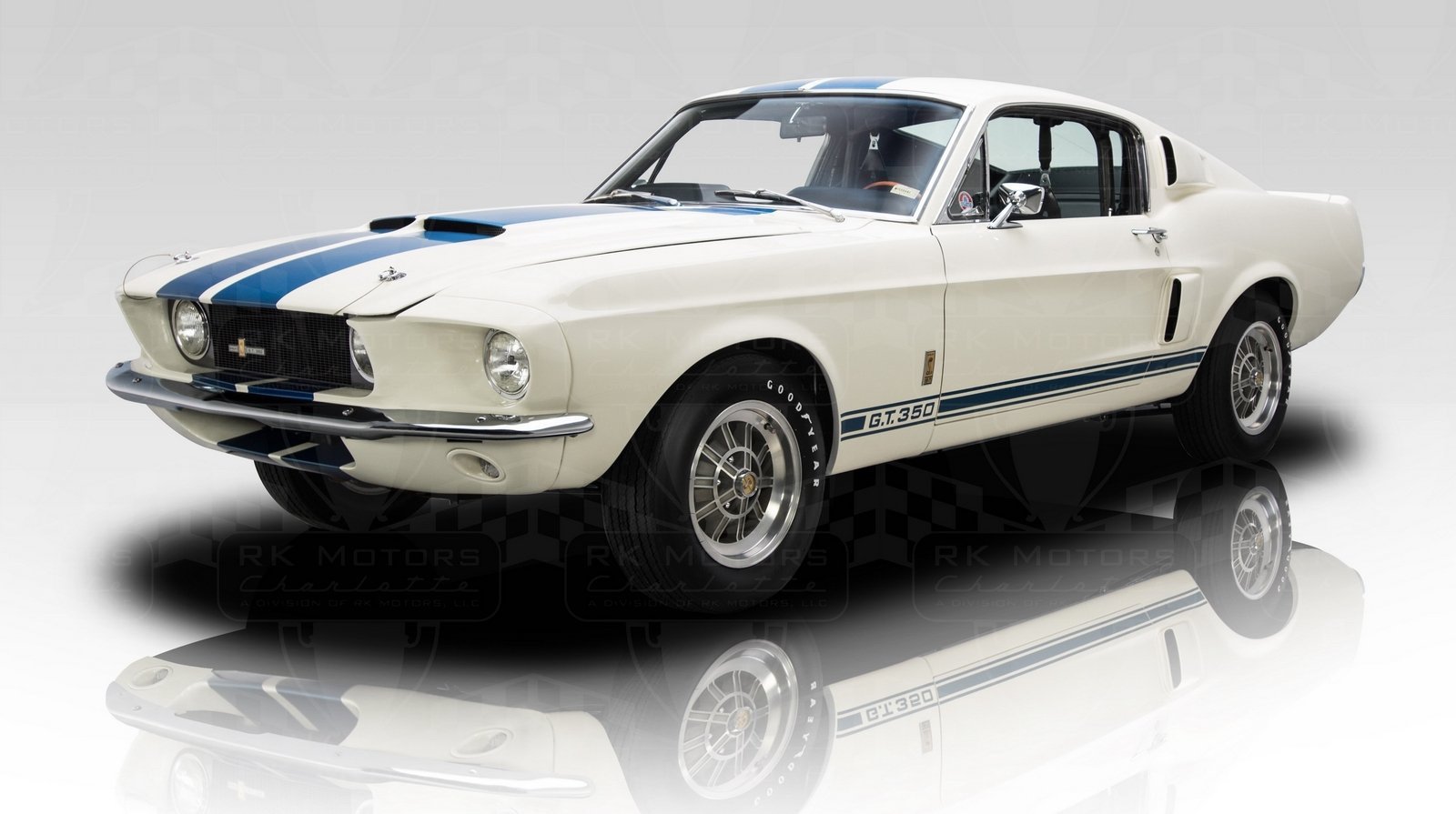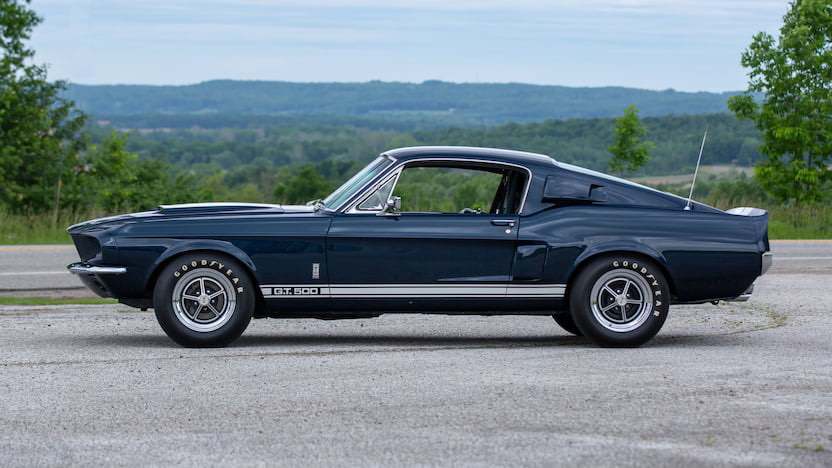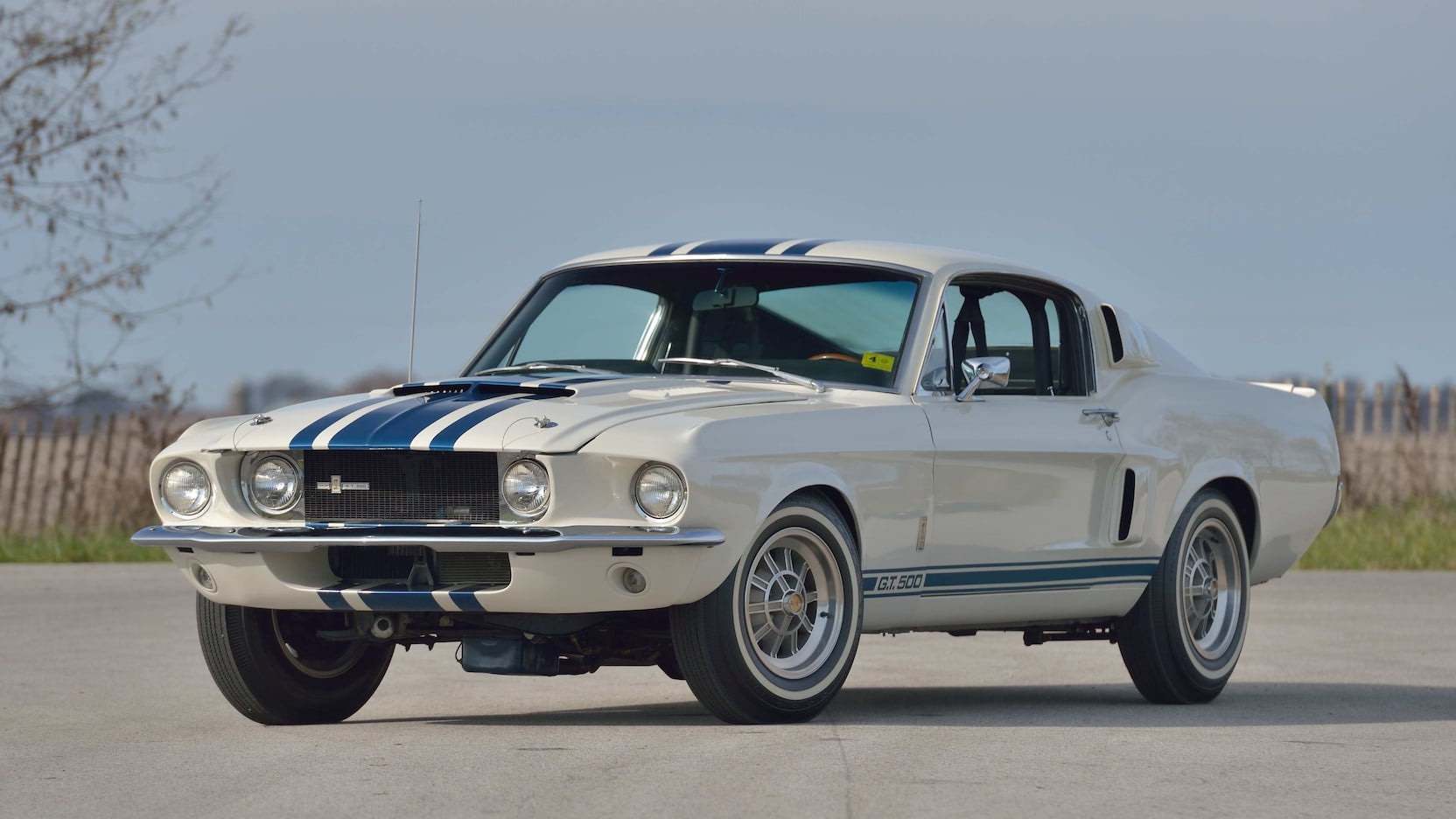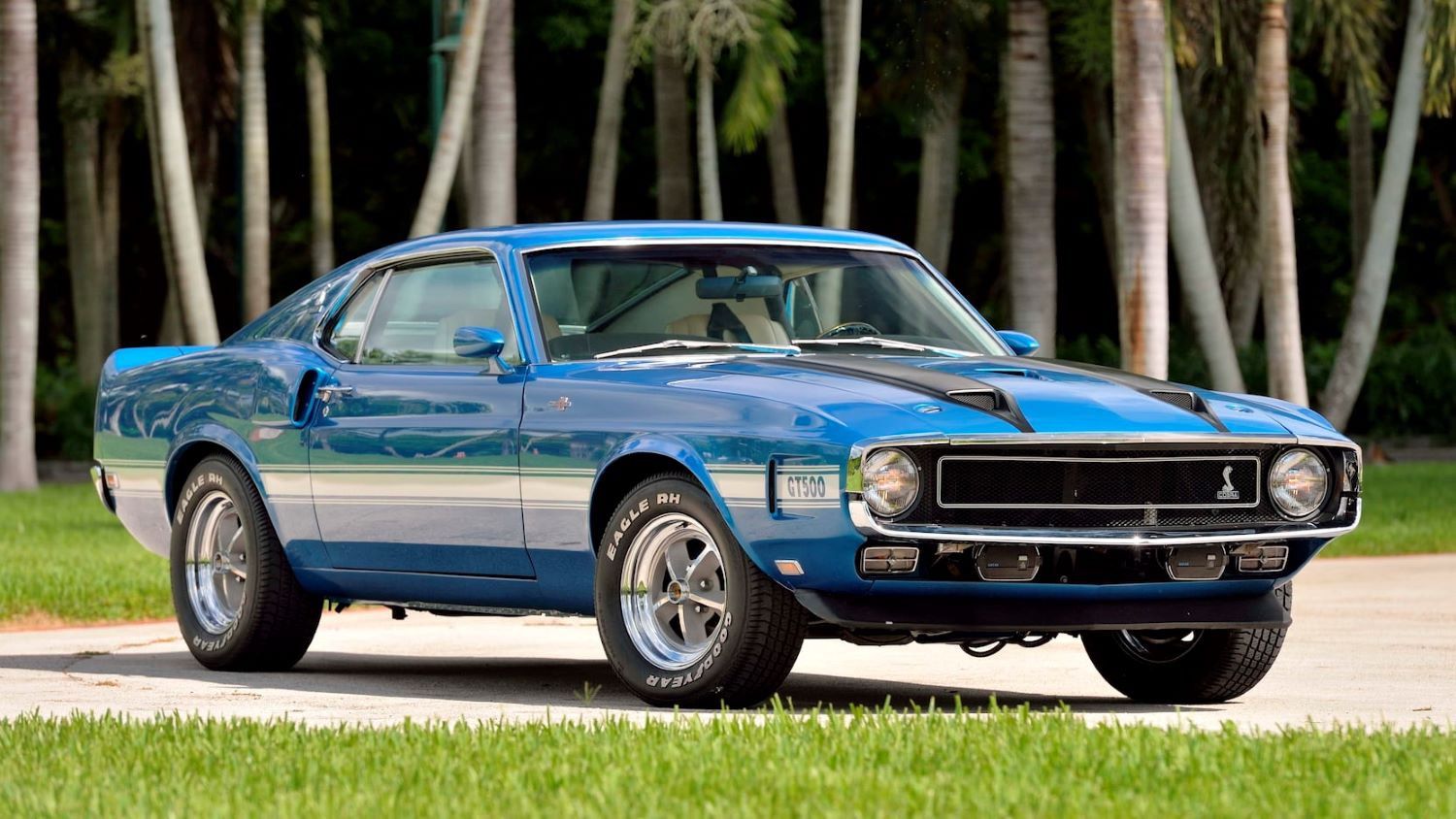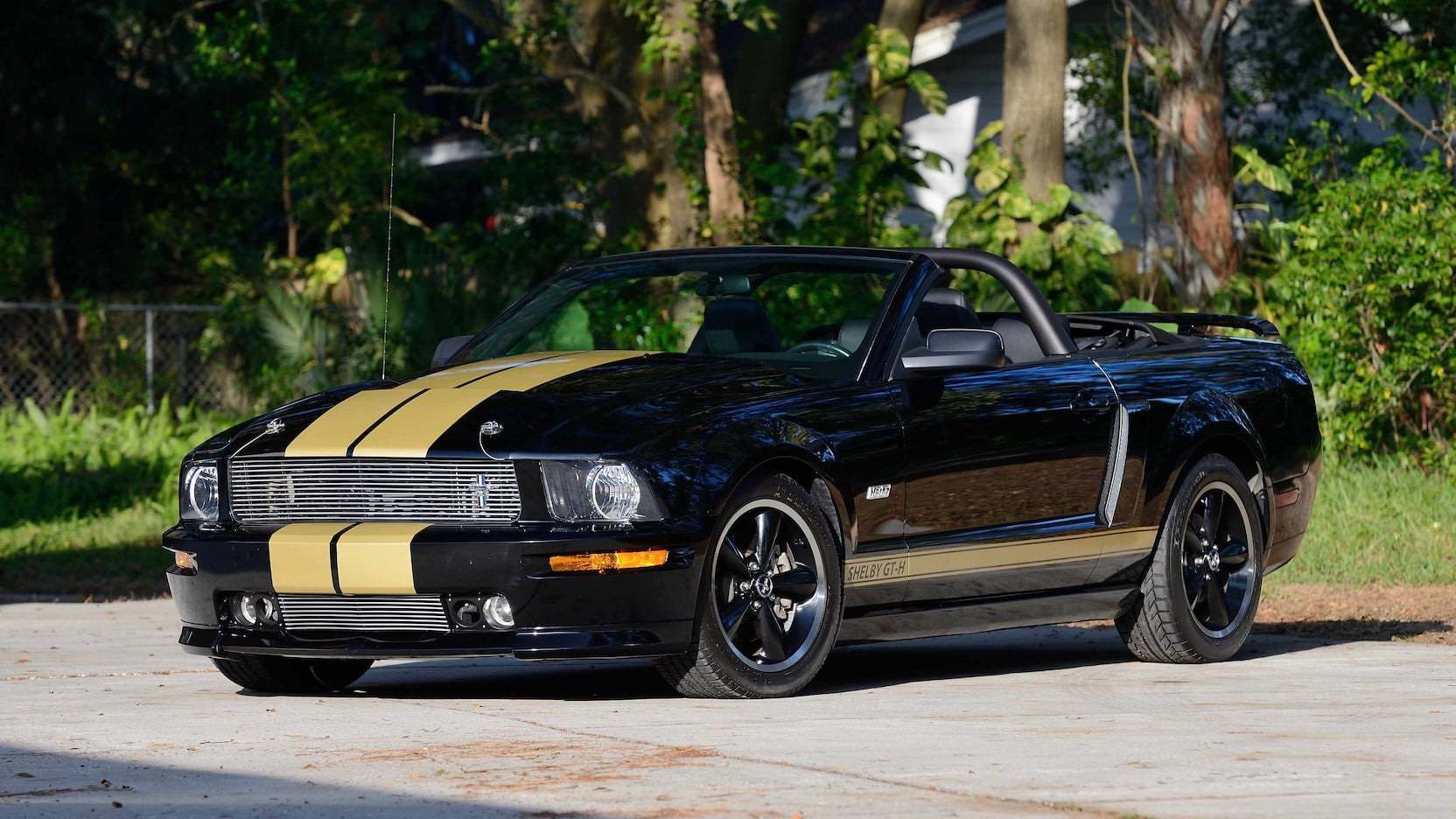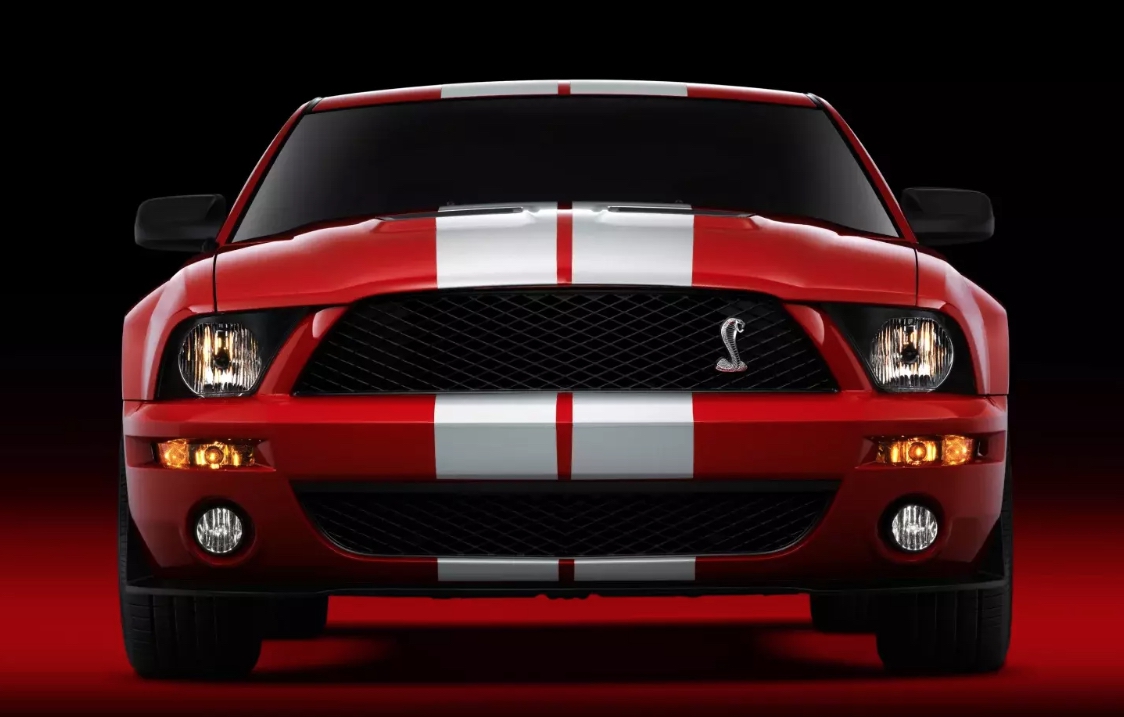It’s amazing, isn’t it? 2022 marks the 55th year since 1967, when the first GT500’s appeared out of Shelby American. A year later, the car gained the Cobra Jet engine and the nickname of “The Snake.” It feels like it was only yesterday that the classic fastback look, the long hood, the subtle but muscular wheel arch flares, and the roar of that engine as the car laid down two lines of rubber was the talk of pretty much every town in America.
Yet, it has been five and a half decades. The Snake nickname has widened and covered a variety of Mustangs throughout those decades that were not GT500s or even GT350s. When one is present in the market, however, it always regains its title as the biggest, baddest muscle car on the road and yanks the name back to where it belongs: on a Ford Mustang GT500.
The somewhat mind-boggling fact about the GT500 is that in those five and a half decades, the three main generations of the car fill up less than half of those years. Why is it, then, that it is one of the most revered badges in American muscle cars, looming over other badges such as Hemi, R/T, Grand Sport, and the like? To answer that, we need to take the Snake for a little trip in a time machine.
The Origins of the Shelby Mustang GT500
Imagine, if you will, that the year is 1965. In the past 24 to 36 months, the Ford Mustang has just launched, the Ford GT40 project has been placed under the guidance of retired race driver and all around performance genius Carroll Shelby, and muscle cars are definitely gripping the attention of the nation. In February 1965, the new Ford GT40 Mk II race car claimed its first victory running at the prestigious Daytona 2000KM, driven by the soon-to-be-legendary Ken Miles with Lloyd Ruby as the other driver.
In other words, Ford was riding a wave of awesome PR, and the masses wanted a glimpse, a small taste of that racing success. As such, Shelby American was given the go-ahead by the big bosses to build modified versions of the Mustang.
These were to be sold as Ford Shelby Mustangs, with an eye towards giving the people just what they wanted. The first car, the 1965 Mustang GT350, came with a Windsor 289 ci (4.7L) HiPo K-Code V8, the stock version of which pushed out an impressive 271 HP. Shelby, however, slapped a 4-barrel Holley 715 CFM carburetor to give it a boost to 306 HP. The GT350 gained the name Cobra from this setup, known as the “Cobra Hi-Riser” due to the high-riser intake manifold under that 4-barrel carb.
It sold well, clearing 500 units in the first year of production, and clearing 1,300 units in 1966. However, while it was a taste of the high-performance life, there was demand for an even higher performance, “ultimate” version of the GT350.
Of course, when you have a man like Carroll Shelby in the good graces of Ford, with his race cars winning Le Mans back-to-back-to-back, you know it won’t take long for that higher-performance version to arrive. It came out in 1967: The Ford Shelby Mustang GT500.
The GT500 in that first year came with a monster Ford Cobra FE Police Interceptor 428 ci (7.0L) V8, with two Holley 600 CFM four-barrel carburetors on a mid-rise aluminum manifold. It produced 355 HP and 420 lb-ft of torque, in a car that weighed roughly 3,240 lbs (1,470 kg). In other words, the year it was released, the GT500 was the fastest ride in town.
In 1968, however, was when the GT500 was perfected. Known as the GT500 King of the Road (KR) edition, the car was fitted with the new version of the 428 Cobra FE V8 known as the “Cobra Jet,” which produced what the factory claimed was 355 HP and 440 lb-ft of torque.
This was hilariously underreported, as independent testing by some of the first owners of the Ford Shelby Cobra Mustang GT500 KR (which was shortened to just “The Cobra GT500KR”) found that the engine made a minimum of 435 HP. The masses loved the car, and despite its at-the-time astronomical price tag of $4,195 in 1967 and $4,472 in 1968, the GT500 outsold the GT350 by a ratio approaching 2:1.
Where the nickname of The Snake was finalized and hammered into the collective memory of every muscle car fanatic around the world, however, was with a special 1967 GT500. Goodyear Tires was supplying the Ford GT40 project as a sponsor for the racing team, as well as having Carroll Shelby being the chief distributor of their tires on the West Coast. Having seen the introduction of the GT500 to the world, they approached him with a request to build a car worthy of demonstrating their new Thunderbolt line of high-performance tires. This being Shelby, of course he said yes.
The 428 Cobra engine was removed from the chassis of a single GT500 selected from the production line, and modifications were made to the engine bay for a GT40-spec 427 FE Series V8 to be dropped in.
Also dropped in was an external oil cooler, race-grade braided lines, and a remote oil filter. The front street brakes were replaced with motorsports-grade brakes, reinforced suspension including traction bars, a massively reworked cooling system to keep the 427 cool, and a Detroit locker rear end with 2.73 ratio gearing.
Ten-spoke Shelby aluminum alloy wheels were fitted with 7.75-15 Thunderbolt tires, and as a final touch, Shelby painted on two blue speed stripes over the white car, in a homage to where the engine had come from, as all GT40s had speed stripes. Completed, this special GT500 was hence dubbed “The Super Snake”.
The Super Snake produced over 520 HP, generated 500 lb-ft or more of torque, and, after the rear-end gears were changed out to a 4.73 ratio, would absolutely destroy the 0 to 60 times of every other muscle car of the time at 4.3 seconds. Only one was ever made, despite the option to make a production version, and that car recently sold in 2019 for $2.2 million.
The Cultural Impact of the Biggest, Baddest Ford Mustang
American car culture had rapidly changed throughout the 1960s, from a focus on big, comfortable family movers to mean-looking cars with snarling, roaring V8s. Around this same time, you had cars such as the Pontiac GTO, the Chevy Corvette and Camaro, the Plymouth Road Runner, the Dodge Challenger, and more—cars you know the look and sound of just by reading their names here, since all of them are legends in their own right. Compared to these, the Ford Mustang was, at least in factory spec, mildly underpowered and even a little sneered at as a “Secretary’s Car.”
Then Shelby came along, delivered a solid left jab with the GT350, and landed the match-ending uppercut with the GT500. The Shelby Cobra Mustang series went from being a line of muscle cars to the line of muscle cars. The fastback coupe became the de-facto shape of a muscle car. The lightly flared wheel arches and the wide, low stance of the GT cars became the stance all muscle cars needed.
It even displaced “America’s sports car,” the Corvette C2, its closest competition, which made the King of the Road designation in 1968 all the more appropriate. Despite it being just about twice as expensive as a decently optioned Mustang coupe, it sold, and sold well.
Over 3,000 units of the GT500 moved in the 18 months between introduction in 1967 to the calendar year end of 1968. It was basically the only name in town when you wanted to talk about what a muscle car should be.
1969, however, saw the decline of the first generation of GT500. The car was remodeled, with the body gaining 4 inches in length, the rear haunches raised, the front cooling intake being reprofiled, and generally the car being a mish-mash of committee decisions by Ford. Despite his name being on the cars, Shelby terminated his agreement with the big blue that summer in disgust. This effectively ended production of the GT350 and GT500, and reverberated in the muscle car community as sales dropped off sharply.
In fact, the Shelby GT500 badge alone was being relied on to move cars off dealership floors, but the fallout of the split between Shelby American and Ford was so devastating that too many cars were being made for customers who no longer wanted anything Carroll Shelby wasn’t making. This led to the now-infamous decision by Ford to have the unsold units of the GT350 and GT500 by year end of 1969 be classified as 1970s vehicles, with the FBI supervising the registration of the VIN numbers for the year change.
These units eventually sold, but the taste had been soured for Ford to use the Shelby name on their performance Mustangs, and it was quietly dropped after 1970. Instead, big blue focused their attention on their internal performance variants like the Mach 1, the BOSS 302, and the like.
However, muscle car enthusiasts the world over still considered the 1967 and 1968 GT500 to be the ultimate Mustangs. It was also this split that caused Ford to eventually form a department known as the Special Vehicles Team, or SVT.
The rift between Shelby American and Ford was so significant, in fact, that it wasn’t until 2005, over 35 years later, that Carroll Shelby finally allowed his name to be put on a Ford again with the Mustang V6 “CS6” kit, which was short for Cobra Shelby V6. Only 17 kits were sold before Ford, partnered with Hertz Rentals, offered Shelby an actual car bearing his name and a legendary code.
Shelby agreed, and the Ford Mustang GT-H, named after the GT350H from 1966, entered production. All 500 units were meant only for the Hertz Rental Company, at that time partnered strongly with Ford, and bore the title of the “Shelby Mustang GT-H” with special 40th Anniversary badges.
In terms of cultural impact, this move registered as not much more than a PR stunt by the blue oval, and even made many Mustang faithful upset that after all this time, Ford was using the Shelby name to make a rental car. They were upset, that is, until 2007, which ended up being a transformative year.
The SVT department had been reworked and was now known as Ford Performance. Shelby buried the hatchet with Ford and signed off on using his name in place of the Ford letters on a car again, and the S197 I generation Mustang, freshly released in 2005, suddenly had a GT500.
Of course, bearing Shelby’s name, the car had to impress him in order to be signed off on, and it did not disappoint. A supercharged 5.4L Modular 330 V8 was made, producing dead on 500 HP and a tire shredding 480 lb-ft of torque. It was slotted into a reinforced chassis that carried a snappy, short-throw 6-speed manual, four-piston Brembos at all four corners, and a completely reworked suspension setup that made the thing handle like it was on rails. It was, at the time, the most powerful production Mustang ever made.
To say that the return of the name, the badge, and the Snake itself was met with enthusiasm is underplaying the impact it had. You had the man signing off on Ford making the car again, over three and a half decades after that famous split. Not only that, you had the brand new Ford Performance department hitting a grand slam on one of their very first cars, giving them a huge boost to their reputation and allowing them to pursue more “affordable performance” projects which led to the amazing Focus ST and Fiesta ST hot hatches.
Finally, the return of the Snake sent Mustang sales, which had already been on the rise since the “horrors” of the 1980 and 1990 variations, straight through the stratosphere and into orbit around the moon.
The biggest, baddest Mustang was back, baby!
The 2022 Shelby Mustang GT500KR Anniversary Edition: The Ultimate Birthday Party
It is truly unfortunate that Carroll Shelby passed away in 2012, as we are fairly certain that he would have loved the birthday present that Ford made for the 55th year of the GT500 and the 60th year of Shelby American. With the 2021+ Shelby GT500 already itself being an absolute monster, again defining the very essence of what a modern muscle car should be, the 2022 Anniversary Edition sees the long awaited return of the King of the Road honorific.
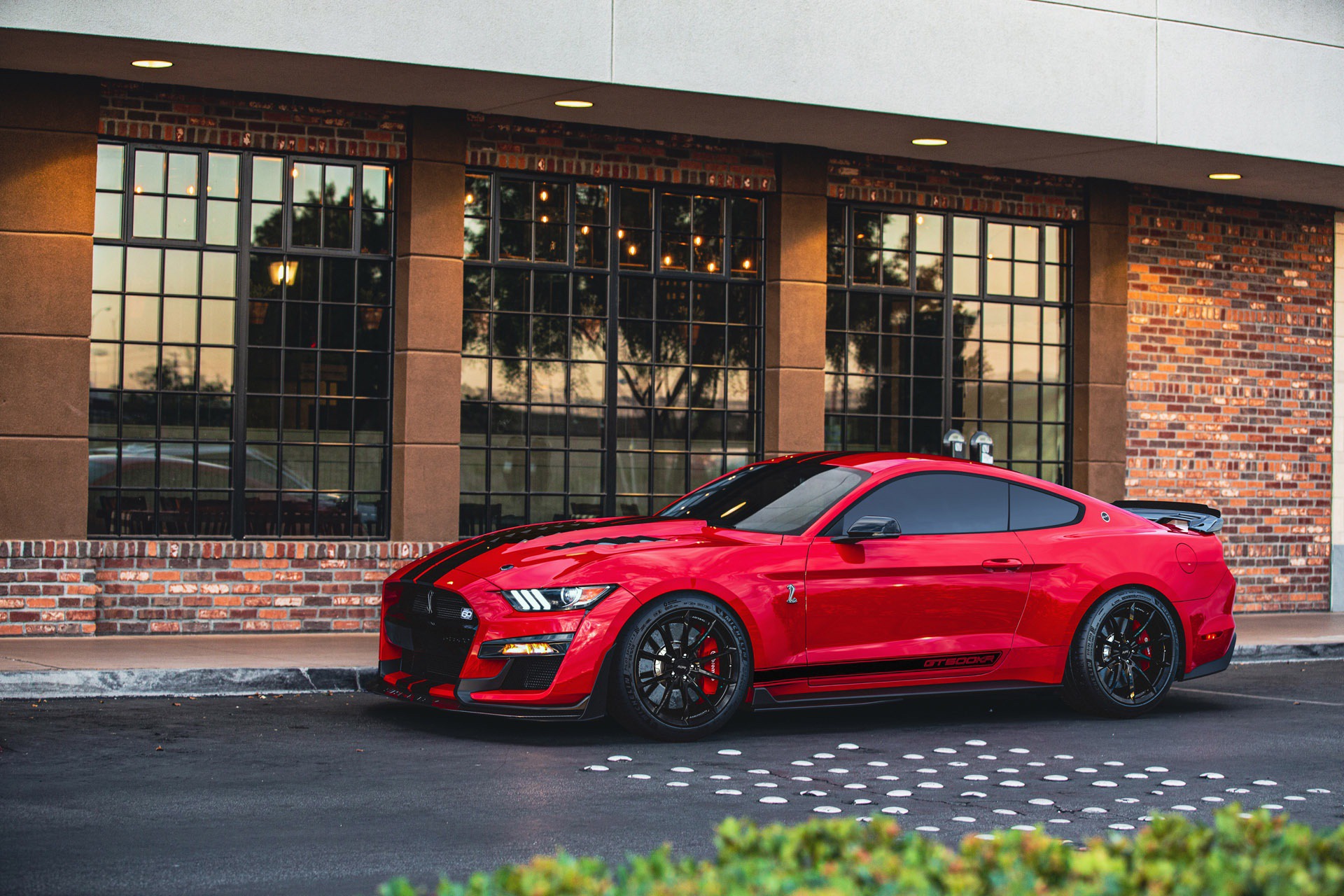
Only 180 total units of this ultra-special Shelby Mustang will be made for the North American market, and will have an estimated price of $127,895, which is the package price of $54,995 added on top of the base Shelby GT500 ($72,900) that you need to buy to install the package on. The cars will be modified at Shelby American’s Las Vegas performance shop, and any 2020-2022 GT500, either new or already-titled, can be upgraded.
So what does this Anniversary Edition give you that would make the Man himself proud?
For starters, the 5.2L V8 of the “standard” GT500 has its supercharger yanked off, and a special edition 3.2L Whipple twin-screw supercharger installed along with a larger throttle body, a direct cold-air intake, a reinforced pulley system, and an all-new dual-core dual-pass intercooler. The engine will then be tuned to run on 91 octane or better pump gas, and will produce “somewhere over 900 HP.”
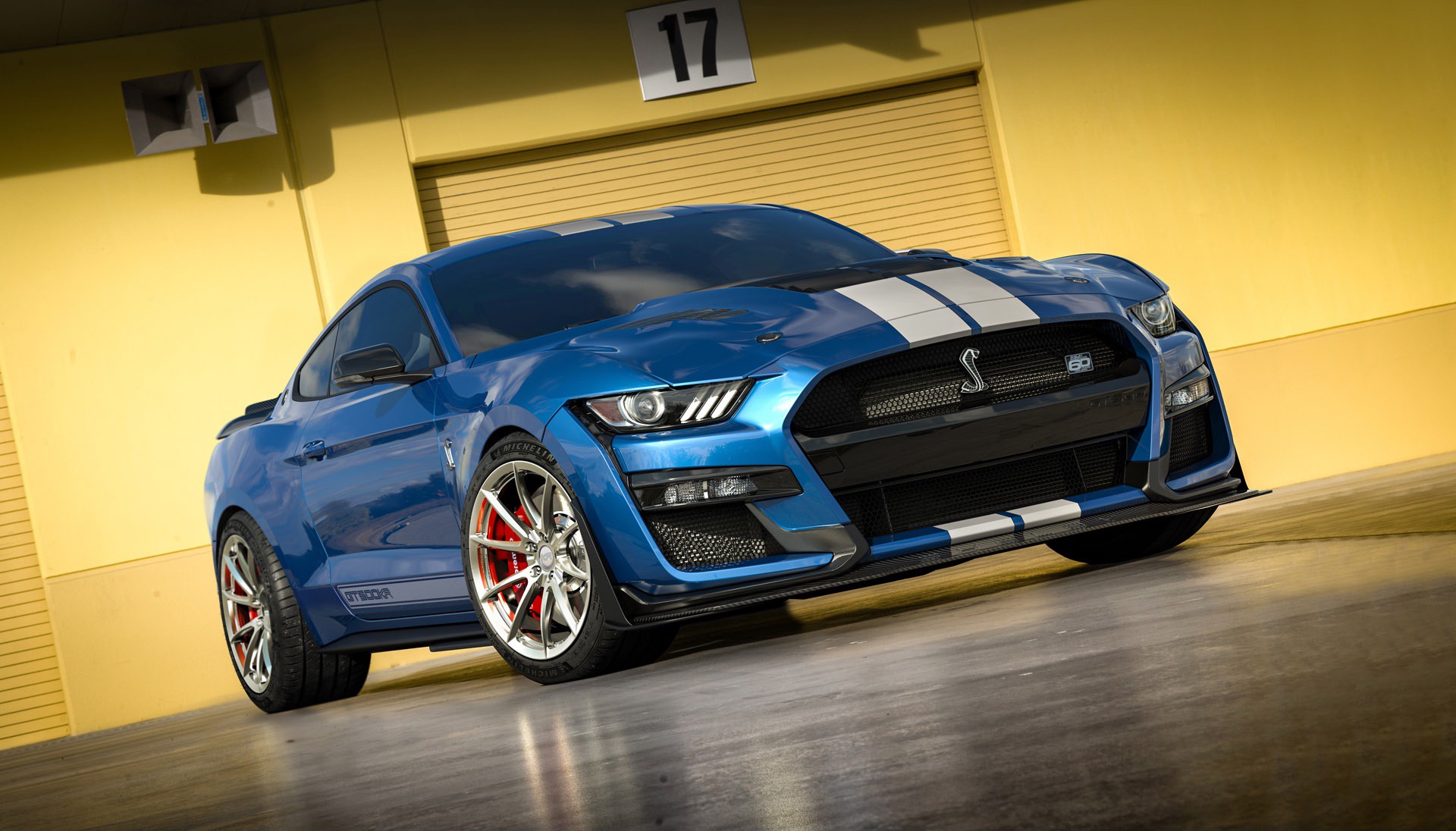
This will, of course, generate a lot of heat and a lot of noise. To manage the heat, a fully carbon fiber hood with rain-managed extraction slats over the exhaust headers and supercharger will use airflow and the Venturi effect to pull heat from the engine bay, preventing heat soak. Of course, it also helps that the soprano wail of the supercharger will be accompanied by the baritone bark of quad exit Borla cat-back performance exhausts, with high flow sport cats.
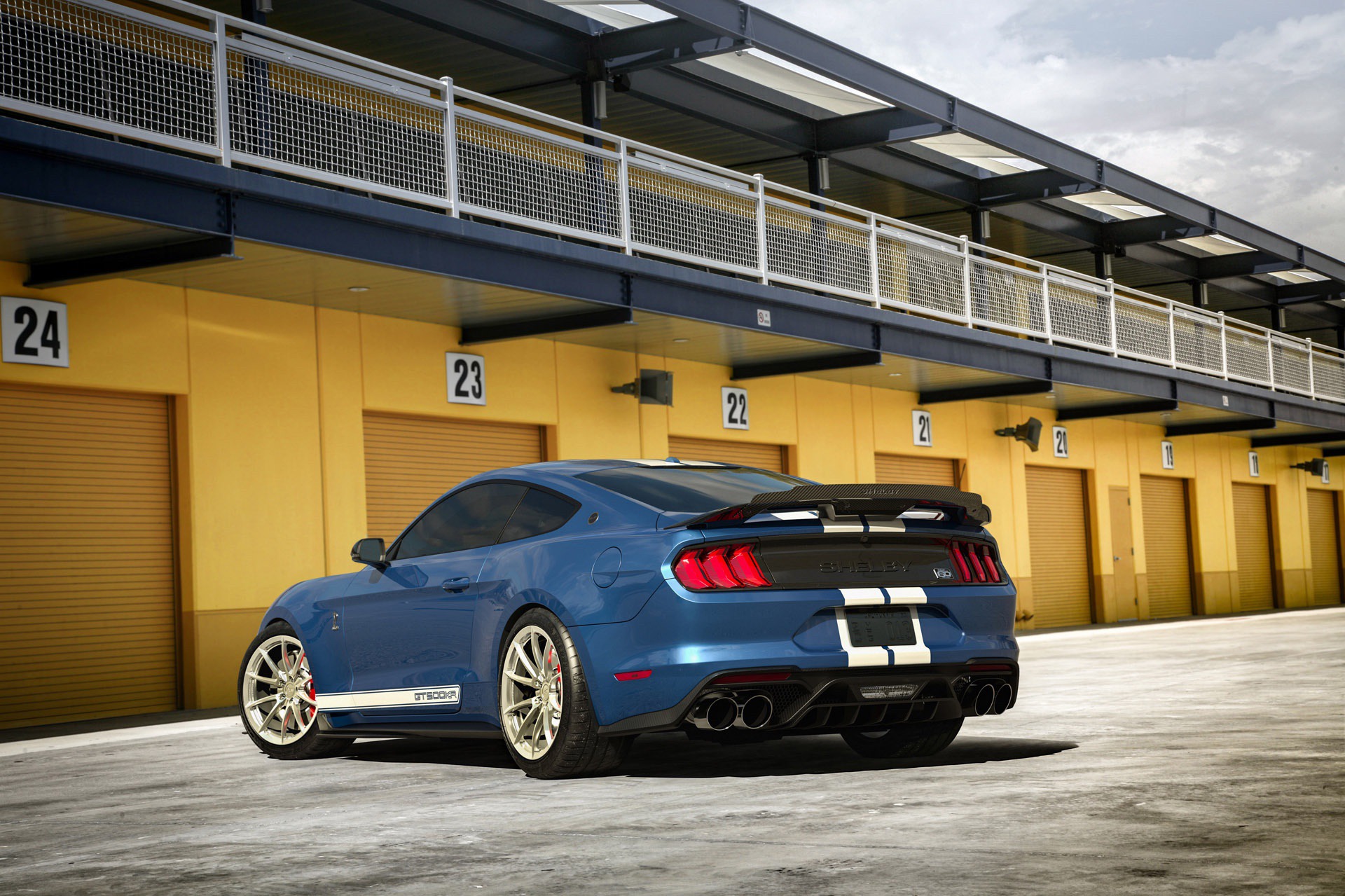
Moving the car will be Ford Performance half-shafts, slung on Ford Performance and Shelby American ride-height adjustable front and rear springs and sway bars. The shocks themselves will be MagneRide units, recalibrated for the immense power of the car and the handling expected of a King of the Road.
The wheels are Shelby American forged superlight aluminum: 20×11 for the front, 20×11.5 for the rear, and each forged as one piece of motorsports-grade 6061-T6 metal. These will be held on by extended and hardened studs and bolts that would not be out of place on the Ford GT supercar.
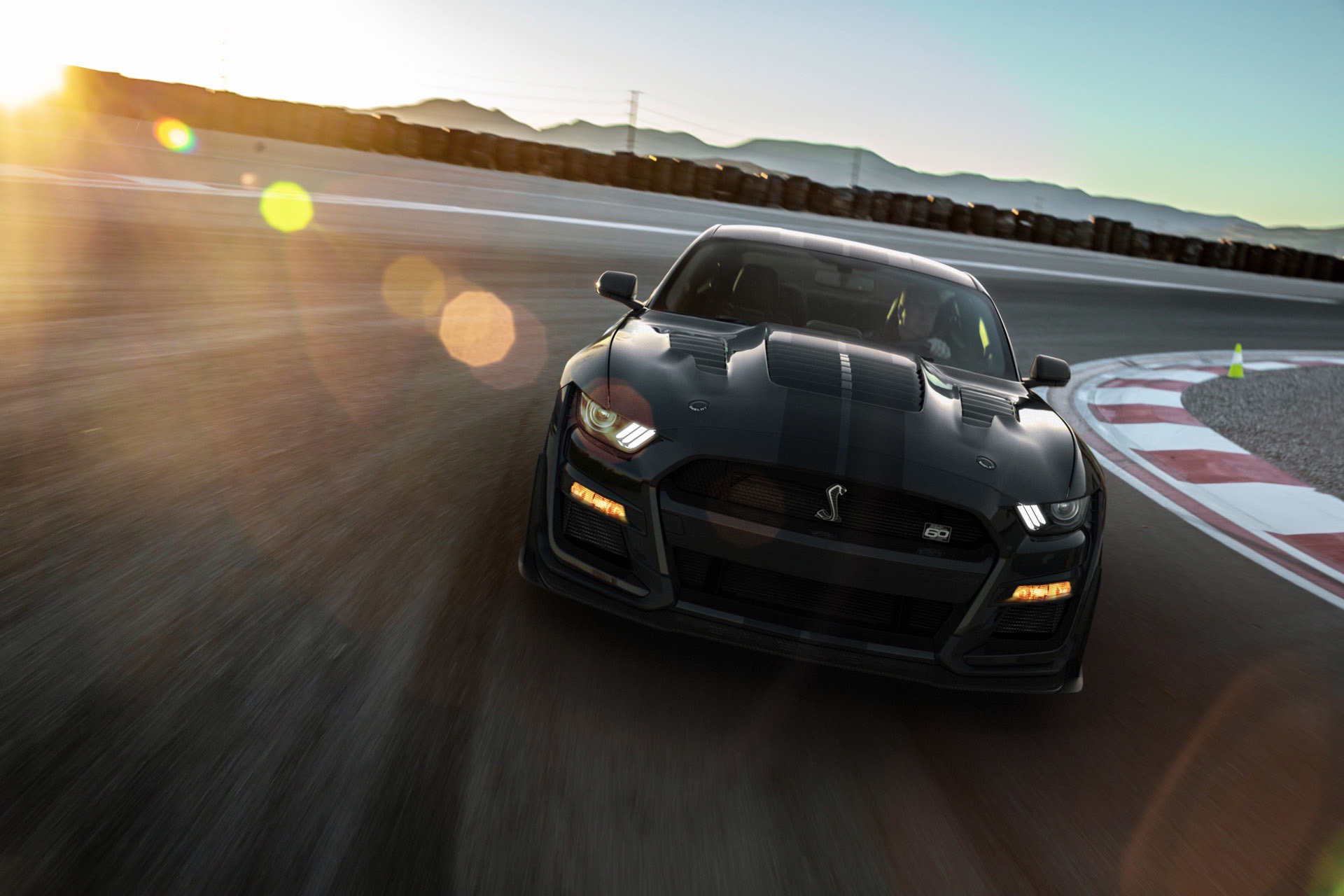
On the outside, the GT500KR 60th Anniversary will get a full suite of carbon fiber aerodynamics, including a functional front splitter, full diffuser, and rear wing. There is the option to also add traditional Le Mans speed stripes like the original GT500KR, as well as the 2022 MY GT500KR’s getting special 60th Anniversary badging. Lastly, each car will receive a numbered engine and dash plate.
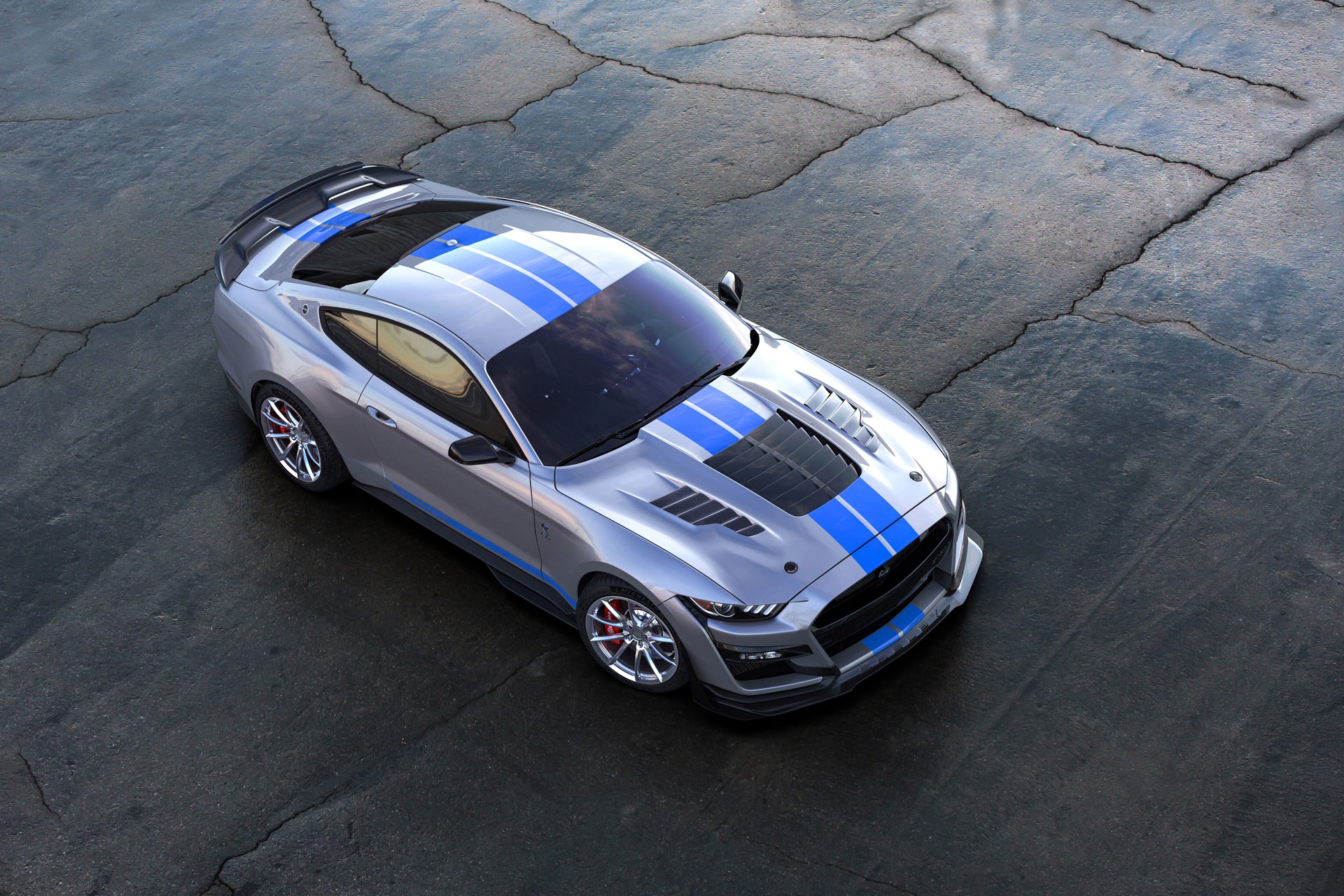
The 2020+ GT500 was already a proper, high end, daily driveable muscle car that could just as easily bring the groceries home as it could embarrass other cars at the drag strip, and then keep up with (and even outrun) some supercars on the track. Now, imagine that car, but turned up past 11, all the way to 12, and you have the GT500KR 60th.
The Snake just got larger fangs, and they are sharp as hell.




